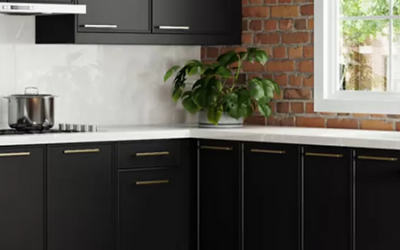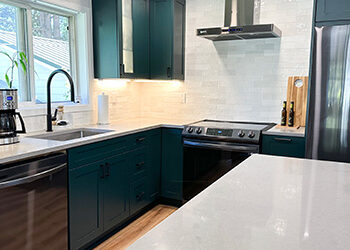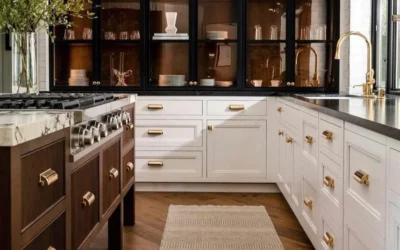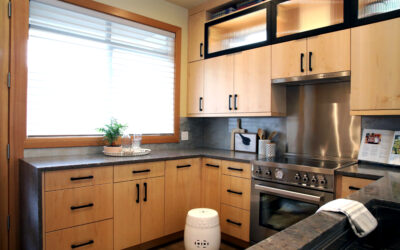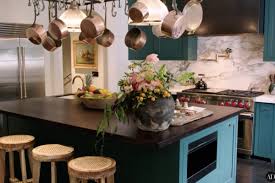Hello everyone! Welcome back to another video of one of our BOHO Kitchen makeovers! This kitchen remodel was such a fun project to work on and the green accent colors as well as the two-toned cabinets and gold hardware, brought the whole design together! Check out the...
The Read
Choosing the right kitchen sink in your remodel!
Sinks and faucets are considered an appliance in your remodel. When thinking about your remodel and choosing your sink, you should really think about how much you'll be using your sink on a daily basis and what you'll be using it for! You want to make sure you choose...
What affects costs in a remodel?
How much does a Kitchen Remodel actually cost in 2023? Well, I get asked that question way too much. And I totally understand that you want to ask that, but it's also a very detailed process to get to that answer. There are two components to this question and you...
Explore KBIS Las Vegas 2024 with us!
BOLD COLORS are everywhere! So many colors are showing back up in style and design! Sinks, tile, appliances, tubs, & more. So many companies are now offering many different colors to bring out your personality in your space!BOLD COLORS are everywhere! So many...
Budget-Friendly Kitchen Remodeling Ideas
Are you considering a kitchen upgrade, but worried about the cost? You're not alone. Many homeowners dream of having a luxury kitchen, but the thought of a major kitchen update can be daunting, both in terms of time and money. The good news is that you don't have to...
North Seattle Kitchen Remodel
Check out this beautiful small Kitchen Makeover where we turned a small unfuntional space into a Kitchen, custom tailored to our customers daily needs! I am very excited to show you this amazing Emerald Green North Seattle Kitchen Remodel with a built in doggy...
Avoiding Common Kitchen Remodeling Mistakes!
A kitchen update can be both an exciting and challenging project. While the anticipation of a new space is thrilling, mistakes happen. In our experience with kitchen design, there are some recurring missteps homeowners often make. Let's navigate through these to...
Bellmont Cabinets Advisory Council
Our owner, Kerstin has been selected by Bellmont among a total of 12 national designers to be on the Bellmont Cabinets Advisory council! We love working with Bellmont Cabinets & are so excited to be a part of it! Check them out here: Bellmont Cabinet Company -...
Choosing the Right Materials for Your Kitchen Remodel
A kitchen remodel is an opportunity to breathe new life into your home. As you envision your dream kitchen, one of the most important decisions you'll make is choosing the right materials for your kitchen remodel. The materials you choose will affect the aesthetics,...
Costly mistakes when Kitchen Remodeling
Let's discuss costly mistakes when kitchen remodeling and help you to avoid these pitfalls when working on your remodel! These planning stages, if not addressed correctly, can cost you thousands of dollars to change once completed! Below are the things we'd recommend...
Maximizing Your Kitchen Space!
Small kitchens can present unique challenges when it comes to design and functionality. With the right approach and creative solutions, you can transform your kitchen and start maximizing your kitchen space to the fullest. In this blog post, we'll explore effective...
Kitchen Remodeling for Resale
A kitchen remodel is a powerful tool for boosting the value and appeal of your home. It not only enhances functionality and aesthetics but also leaves a lasting impression on potential buyers. In this blog post, we'll explore the significance of kitchen remodeling for...
Visual Textures in your Kitchen Design
Most of the surfaces in your kitchen are flat – these include your cabinets and floors. You can add visual textures to your kitchen design in your countertops, backsplash, and some in your cabinetry. There are four main surfaces in your kitchen: Two horizonal – floors...
Updates from Bellmont Cabinets
NEWS: Updates from Bellmont Cabinets | Unboxing Video !!! Who else is obsessed with unboxing videos as much as I am – HA! Well not just that, but we are also looking at new cabinet samples! I have all the new samples for Bellmont Cabinet’s latest color updates and I...
Kendall Jenner’s Kitchen Tour & how to replicate
Check out one of the most popular green kitchens (!!) owned by our dear Kendall Jenner! Kendall Jenner’s Kitchen Tour! I took the time to dig deeper into this Kitchen Design and walk you through selections you can choose to replicate this stunning look! Also, sorry my...
Appliances for your Kitchen Remodel
Watch my video below to understand everything you need to know about appliances for your kitchen remodel. There are so many details that flow into your cabinet design when thinking about your appliances. Remember, cabinets get build around the appliances! This video...
Kitchen Must Haves in your Kitchen Remodel
Check out these Kitchen Must Haves you need in your design/remodel!These Top 10 Kitchen Must Haves are what you need in your kitchen design/remodel. These are all the things I make sure to mention and/or include in every project I do! Not only do these things make...
How to choose the right kitchen sink!
Are you struggling with how to choose the right kitchen sink? We can help! This week I thought we should talk about how to choose the right Kitchen Sink for your kitchen remodeling project. There is so much more that goes into this decision and I have a few insider...
Huge Kitchen Transformation
Check out this HUGE KITCHEN TRANSFORMATION before & after! I am so stoked to show you all my kitchen in the house I’m currently living in!This project took me over a year of patience while I was waiting on some of my materials. The German cabinet parts for the...
Modern Transitional Kitchen Design
This Modern Transitional Kitchen Design was one for the books! From a small space to something massive – you don’t want to miss this transformation! This couple loves to entertain, so we had to make sure we added in a bar area that could also serve as a buffet AND a...




